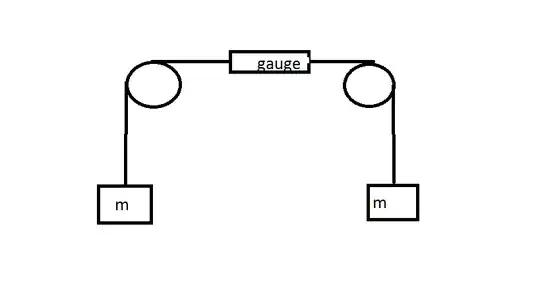There is a system composed a rope connecting two identical masses, each of mass $m$, suspended by two fixed pulleys. The system is in a static equilibrium.
In between the pulleys, there is a tension gauge in the rope. It is my understanding that this tension gauge should read $mg$, as it is being pulled on both ends with a force of $mg$, exactly the same as if it were simply suspended from a fixed point holding a mass of $m$.
However, my professor says the tension gauge reads $\frac{mg}{2}$. What is correct, and why?
